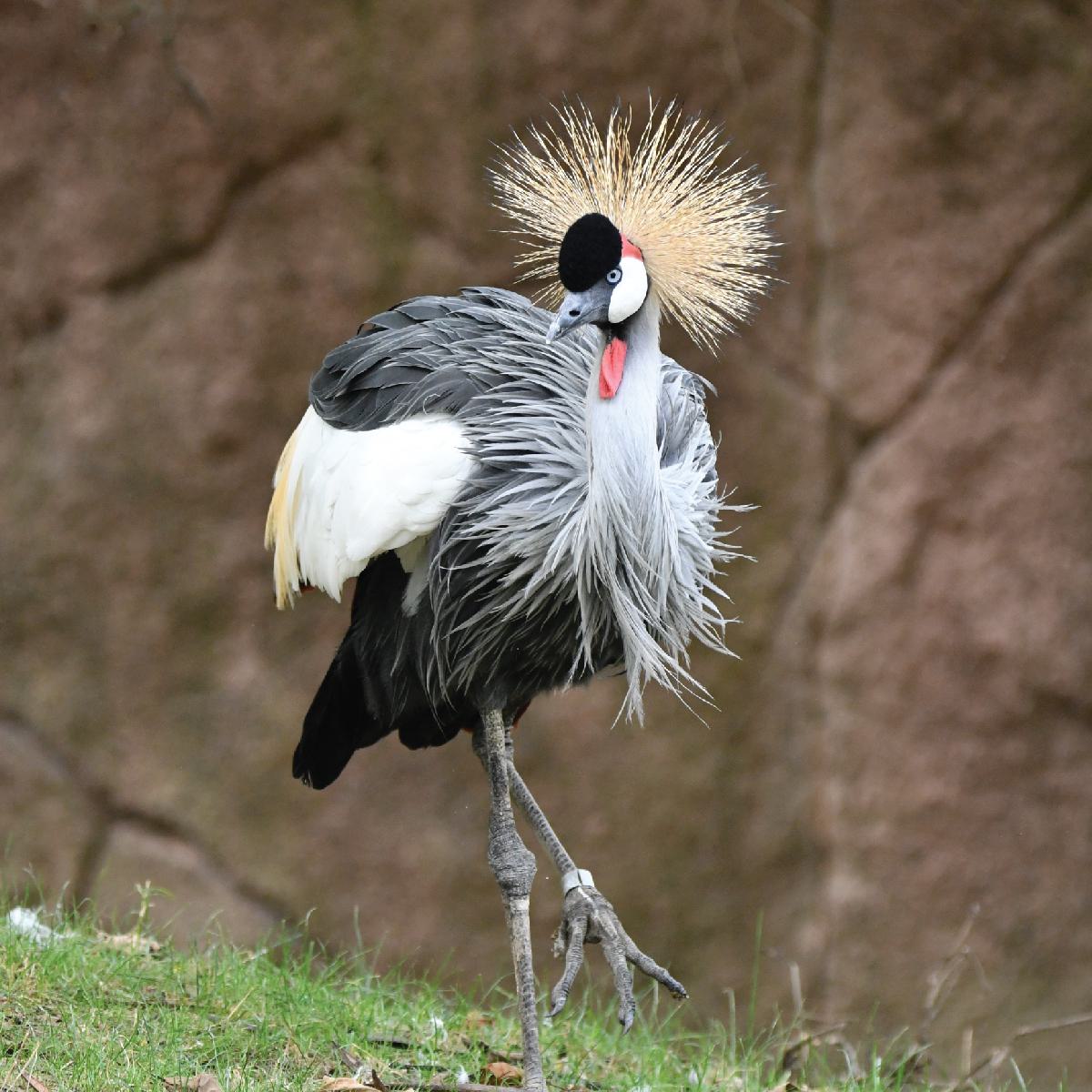
East African Crowned Crane
Balearica regulorum gibbericeps
Did you know?
- East African Crowned Cranes are a part of the Gruidae family, which they share with other cranes.
- This bird gets its name from the distinctive golden "crown" of feathers on its head.
- They live in grasslands and wetlands in Eastern Africa.
- They are known to act injured to lure predators away from their nests.
- A female will lay about fours eggs per clutch.
Adaptations
East African crowned cranes are tall birds with excellent peripheral visions. Their height and eyesight enable the birds to watch out for predators from great distances. They have a prehensile hind toe which allows them to grab onto branches, making them the only crane species to perch in trees.
Courtship and Young
East African crowned cranes, like all cranes, have elaborate courtships which include dramatic courtship dances. The dances include head bobbing and wing flapping, sometimes while the male and female complete circles around each other. Crowned cranes usually mate for life. Both the male and female cooperate in building the nest and in defending eggs and chicks. Chicks will stay with their parents for about a year.
Threat Level
- Unknown
- Common
- Near Threatened
- Threatened
- Endangered
- Critically Endangered
- Extinct in the Wild
Endangered
The East African Crowned Crane faces a very high risk of extinction.
Range
Eastern Africa
Habitat
Wetlands, open grasslands, savannas

We care about East African crowned cranes
We support East African crowned cranes in Red Rocks at the Zoo. Learn more about how we are helping wildlife around the world.
Find this animal in Red Rocks

SAINT LOUIS ZOO ZONE
Red Rocks
At Red Rocks, you’ll view some of the world’s most powerful predators living near some of the world’s most graceful prey. Tigers, zebra and giraffes all share the natural rocky boulders and outcroppings as their territory. With shading trees and a bird or two among the mammals, Red Rocks is a great place to spend a day at the Saint Louis Zoo.

